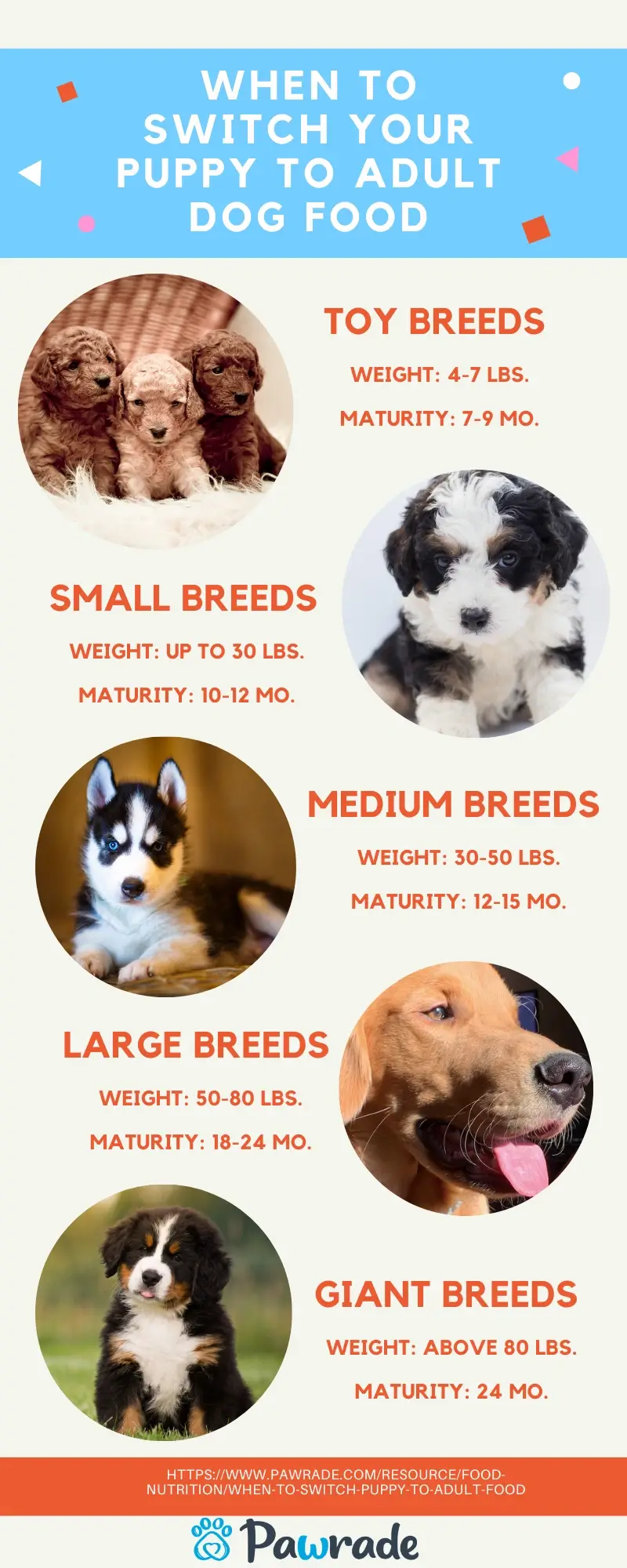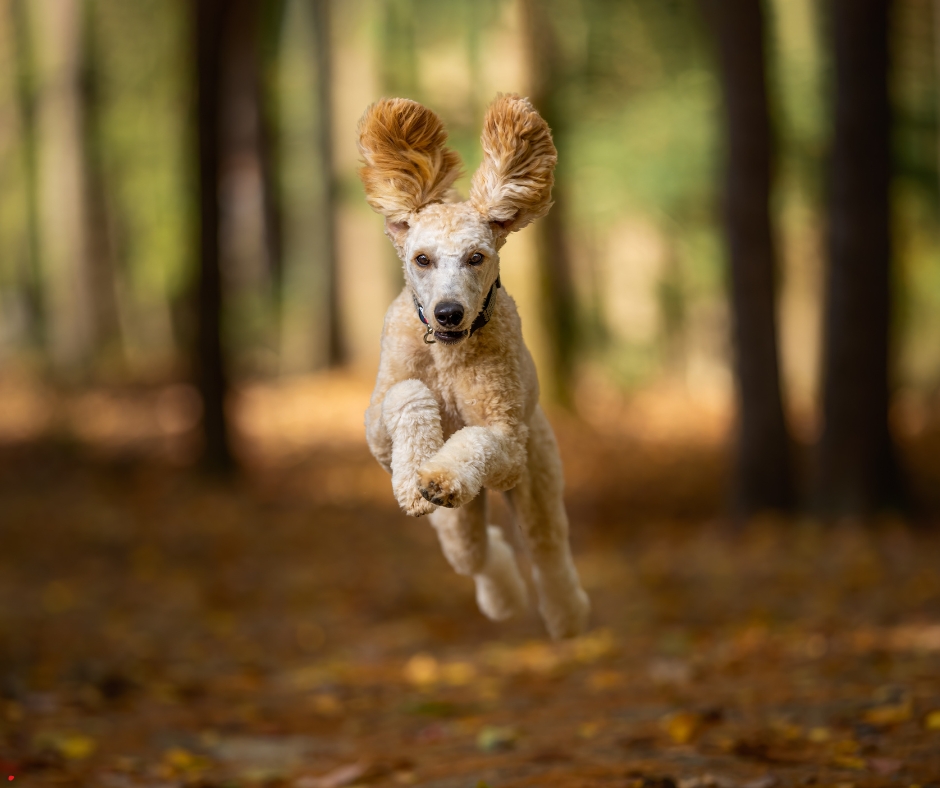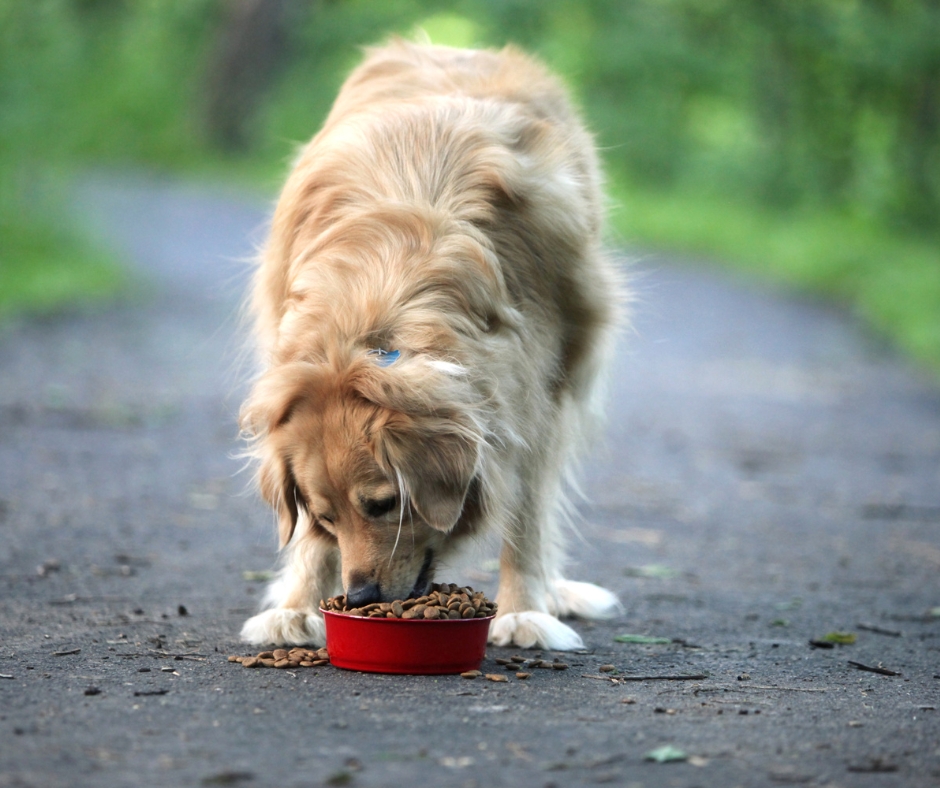Switch to Adult Dog Food: Essential Timing Tips Your dog weighs around 80% of what an adult should weigh. When the kid is a year old, this typically occurs.
Switch to Adult Dog Food: Essential Timing Tips The transition is one of the most crucial stages in your dog’s growth. Puppies need a different diet than adult dogs in order to maintain their rapid development. By the time they are a year old, most dogs have reached maturity and need a diet that maintains their health and energy.
Large breeds may have a longer maturity period, often lasting 18 to 24 months. Always consult your veterinarian before making a modification to ensure that it meets your dog’s specific needs. Proper nutrition is essential for maintaining your dog’s overall health; therefore, it’s imperative that this transition be completed as quickly and smoothly as possible.
Finding Developmental Turning Points
Understanding your puppy’s growth phases is essential for their wellbeing. Switch to Adult Dog Food: Essential Timing Tips It is easier to make sure they get the right nutrients when you know. This guide may help you identify the key signs that your puppy is ready for this transition.
Physical Signs
Physical development should be the first thing you look for. Puppies grow quickly and change their bodies. Watch for the following signs:
- Weight gain: Your puppy has reached around 80% of its adult weight.
- Height: Your puppy’s height is almost equal to that of an adult.
- Teeth: Adult teeth have replaced baby teeth.
These bodily signs indicate that your puppy is approaching adulthood. This means it’s time to consider switching to adult dog food.
Changes in Conduct
Behavior changes may be a sign of your puppy’s maturation. Be mindful of these behaviors:
- Energy levels: Rather than having intermittent outbursts, your dog displays more steady energy.
- Social behavior: Your puppy acts more calmly when he or she is with other dogs.
- Feeding habits: Your dog is less interested in eating often.
These changes demonstrate the maturity of your puppy’s behavior. Now is the time to transition to adult dog food.
A seamless transition to adult dog Recognizing these growth phases ensures Chow. This keeps your dog happy and healthy as they age.

Factors Particular to Breeds
Your dog may need to transition to adult food, depending on their breed. Breeds differ in their rate of growth. This affects the timing of their transition to adult dog food. Let’s look at breed-specific characteristics for dogs of all sizes.
Little Breeds
Little breeds mature more quickly than larger dogs. Usually, they reach maturity in nine to twelve months. It’s essential to convert to adult dog food at this stage. Certain nutritional ratios are included in adult dog food for tiny breeds. These meet the higher calorie needs and metabolism of little dogs. Look for meals that contain:
- A higher percentage of fat
- Diminished kibble size
- Essential vitamins and minerals
These factors ensure your little breed will remain healthy and active. Consult your veterinarian to determine the best time to make the switch.
Big Breeds
Large breeds take longer to mature. They take 18 to 24 months to reach adulthood. An early transition to adult dog food may have detrimental health repercussions. Large-breed adult dog food encourages a slower metabolism and healthy joints. Crucial elements to look for include:
- Reduced fat content
- Glucosamine and chondroitin for joint support
- Controlled calcium and phosphorus levels
These nutrients help avoid weight and joint problems. Before you make the adjustment, speak with your veterinarian.
Below is a table listing the breed-specific factors:
| Breed | Age to Switch | Important Nutrients |
|---|---|---|
| Small Breeds | 9-12 months | Higher fat, smaller kibble, essential vitamins |
| Large Breeds | 18-24 months | Lower fat, joint support, controlled calcium |
The Nutritional Needs of Adult Dogs
Understanding the nutritional needs of adult dogs is essential for their health. Adult dogs need a balanced diet in order to maintain their weight, energy levels, and overall health. This section lists the important nutrients your adult dog requires.
Needs for Nutrition
Adult dogs‘ dietary requirements vary according to their breed, size, and level of activity. Generally speaking, a dog’s calorie intake should be balanced to avoid obesity or malnutrition.
| Dog Size | Calories Per Day |
|---|---|
| Small (up to 20 lbs) | 200-400 |
| Medium (21-50 lbs) | 400-900 |
| Large (51-100 lbs) | 900-1,800 |
| Extra Large (101+ lbs) | 1,800-2,500 |
Levels of Fat and Protein:
Are necessary for an adult dog’s diet. While fat gives you energy, protein keeps your muscles strong.
- Protein: An adult dog’s diet must have at least 18% protein.
- Fat: Fat should make up at least 5% of their diet.
Fish, meat, and chicken are good sources of protein. Healthy fats may be found in meat, fish, and oils.
If you offer your dog the right proportion of these nutrients, they will stay healthy and active.

Creating a Smooth Transition
Switch to Adult Dog Food: Essential Timing Tips Making it for your dog is essential. A smooth transition ensures the continued health of your dog. This guide will help you make the transition with ease.
Slow Start
Introduce new meals gradually. Start by mixing a little amount with their current meal. Over the course of seven to 10 days, progressively increase the new meal. This method prevents upset tummies.
| Day | Current Food | New Food |
|---|---|---|
| 1-2 | 75% | 25% |
| 3-4 | 50% | 50% |
| 5-6 | 25% | 75% |
| 7-10 | 0% | 100% |
Monitoring responses
Watch for changes in your dog’s behavior. Watch for symptoms such as vomiting, diarrhea, or lack of appetite. These may indicate a problem with the new dish.
Take note of your dog’s level of energy. A healthy amount of energy means that the transition is going well. Talk to your veterinarian immediately if any issues arise.
- Verify the consistency of your stool. Normal stools indicate that your dog is eating well.
- Check for scratching or irritation. These may indicate an allergy.
- Examine the condition of the coat. Glossy coats are a sign of good nutrition.
Typical Errors to Avoid
Switch to Adult Dog Food: Essential Timing Tips Making the grownup meals is a crucial first step. If you make errors at this point, your dog’s health may suffer. Here are some common mistakes to avoid.
Overfeeding
Overfeeding is a mistake that many pet owners make. Even though it seems harmless, it may cause serious health issues. Obesity in dogs leads to musculoskeletal problems, diabetes, and heart disease.
Following feeding guidelines is essential. Each dog food package comes with feeding instructions. Pay attention to the recommended amount based on your dog’s weight and age.
| Dog Weight | Daily Food Amount |
|---|---|
| 10-20 lbs | 1-1.5 cups |
| 20-50 lbs | 1.5-2.5 cups |
| 50-100 lbs | 2.5-4 cups |
If you give your dog the right food, they will stay healthy. Avoid overindulging in treats. Treats shouldn’t account for 10% of daily intake.
Ignoring the Ingredients’ Quality
Not all dog chow is made equal. Using high-quality ingredients is crucial for your dog’s wellness. Always read the ingredient list on the food container.
Look for meals that include high-quality protein sources. Ingredients like fish, meat, or fowl should be listed first. Avoid foods that include fillers, such as wheat, soy, and maize. These fillers may cause allergic responses and are lacking in nutrition.
The following elements need to be pursued:
- High-quality proteins include fish, lamb, beef, and chicken.
- Flaxseed oil and fish oil are good sources of fat.
- Fruits and vegetables: carrots, spinach, and blueberries.
Avoid artificial coloring, flavoring, and preservatives as well. These substances may be harmful to your dog. Select organic preservatives like vitamin C and E.
Making the move to adult dog food is a significant step. Avoid these common mistakes to maintain your dog’s happiness and well-being.
Talking to Your Veterinarian
Starting to give your dog adult food is a big step. Consultation with your veterinarian ensures a smooth transition. Your veterinarian can provide informed advice tailored to your dog’s needs.
Frequent Inspections
The health of your dog depends on routine exams. During these visits, your veterinarian may assess your dog’s readiness for adult food. They will evaluate weight, growth, and overall health. These tests facilitate the early identification of any issues.
Customized Advice
Every dog is unique. Your veterinarian may provide specific advice based on your dog’s breed, size, and overall health. Allergies and dietary restrictions will be considered. This ensures that your dog is fed the right kind of food.
| Factor | Consideration |
|---|---|
| Breed | Different breeds mature at different rates. |
| Size | Small dogs may mature faster than large breeds. |
| Health | Health conditions may affect dietary needs. |
Indications Your Dog Is All Set
Switch to Adult Dog Food: Essential Timing Tips Knowing when to is crucial. It encourages the maintenance of their wellbeing and health. There are unmistakable signs that your dog is ready for this adjustment. Here are a few key indicators to help you make your choice.
Constant Weight
Before introducing adult food, your dog should reach a stable weight. Puppies grow quickly and gain weight. Adult dogs maintain a more stable weight. Check your dog’s weight on a regular basis.
| Age | Weight (approx.) |
|---|---|
| 6 months | 50% of adult weight |
| 12 months | 80-90% of adult weight |
| 18 months | 100% of adult weight |
A consistent weight over many months is beneficial. This indicates that your dog is ready to consume adult food.
Decreased Activity
Puppies are usually gregarious and active. As they age, their level of activity decreases. Compared to adults, puppies are more energetic.
- Reduced playtime
- Additional naps
- Calmer conduct
Has your dog become less active? Based on this, they could be ready for adult meals. Adult dog chow may include nutrients that are beneficial to dogs with lower energy levels.
Maintaining a Balanced, Healthy Diet
It’s a big decision to start feeding your dog adult food. It ensures that your pet is fed the right kind of food. Eating a balanced diet is essential for their vitality and well-being. A nutritious diet enhances their overall health. Use these suggestions to keep your diet balanced after the switch.
Including Treats
Treats are a great way to express gratitude to your dog. They shouldn’t make up more than 10% of your dog’s daily caloric intake. Choose sweets that are good in nutrition and low in fat. Table crumbs should not be served as candy. Look for foods designed specifically for adult dogs. Reward excellent behavior with treats.
Frequent Mealtime
Establish a regular eating schedule. Every day, feed your dog at the same times. This facilitates their digestion and metabolism. Divide the daily amount of food they consume into two meals. This maintains their energy levels steady and prevents them from overeating. Use a measuring cup to keep portions under control.
| Age Group | Feeding Frequency |
|---|---|
| Puppies | 3-4 times a day |
| Adult Dogs | 2 times a day |
| Senior Dogs | 2 times a day |
- Morning Meal: Half of the daily food supply should be given during the morning meal.
- Evening Meal: Serve half of the daily allotment of food.
Check your dog’s weight on a regular basis. Adjust their food intake as needed. Consult your veterinarian if you have concerns about the food your pet is eating.
Frequently Asked Questions
When Is It Time for My Dog to Begin Eating Adult Food?
You should start giving your dog adult food when they are 12 months old. Consult your physician for guidance on a specific breed.
What Tells Me If My Dog Needs Adult Food?
Symptoms include gaining weight, feeling less energetic, and losing interest in puppy food. Adult meals meet their changing nutritional needs.
Is it possible to switch to adult foods gradually?
It is recommended that the change be made gradually over a seven-day period. Increase the amount of grownup food in their current diet.
Does the Transition to Adult Food Depend on Breed?
It’s true that breed size affects time. While small breeds flip between 9 and 12 months, large breeds switch between 12 and 18 months.
In conclusion
Switch to Adult Dog Food: Essential Timing Tips Making the adjustment is crucial for your pet’s health. Talk to your veterinarian and monitor changes in energy and weight. A nutritious diet ensures your dog’s success. Make the change at the right time for a happy and healthy spouse. Always prioritize your dog’s dietary needs and be informed about them.











